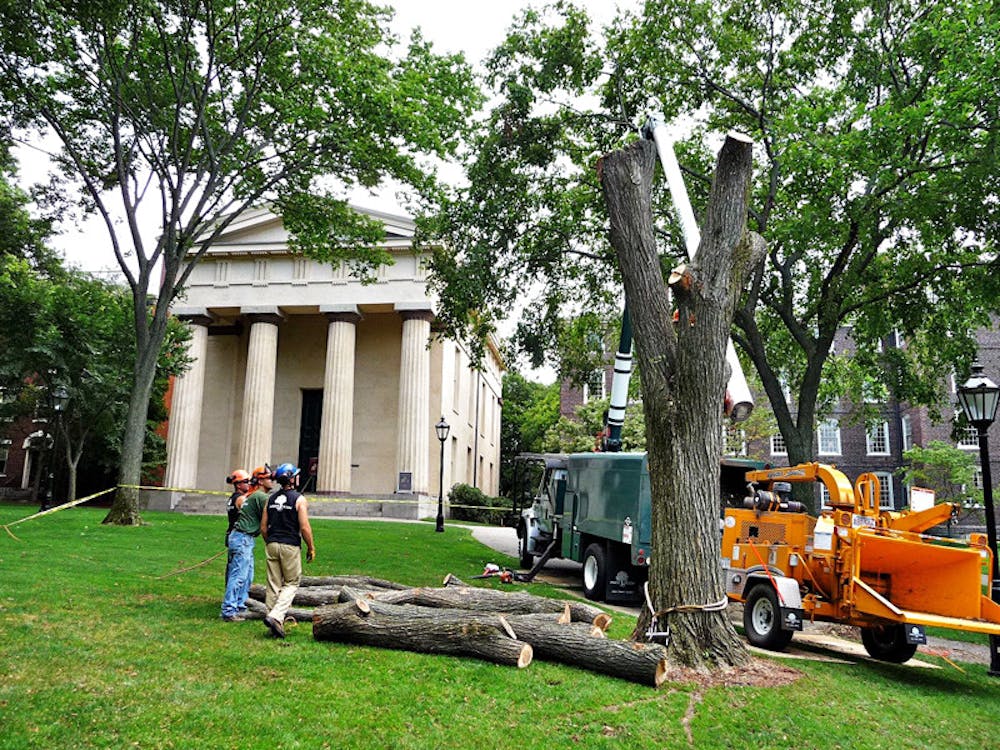Over the summer, Brown lost one of the campus's 86 elm trees, a 75-year-old located on the Quiet Green, to Dutch elm disease.
In collaboration with the Department of Visual Arts, Facilities Management removed the affected tree in such a way that the wood could be used for student art projects, coordinated by Richard Fishman, professor of Visual Arts.
Fishman began working with Facilities in 2000 when a 100-year-old elm tree located outside the Watson Institute died from Dutch elm disease. With the help of Fishman and his students, the tree was turned into works of art and furniture now exhibited around campus. Various exhibitions, performances and creative projects by both Brown and Rhode Island School of Design students have since been conducted, including the Elm Tree Project, which attempts to "document, reflect upon and work to continue (the tree's) legacy," according to its website.
Dutch elm disease is a condition spread from tree to tree through the root systems or by the European or North American bark beetle, explained Patrick Vetere, the University's grounds superintendent. According to Vetere, the disease enters through broken tree branches, and pathogens spread throughout the tree's water vessels, killing the tree in approximately three weeks.
The process undertaken by Facilities concerning tree removal is careful and complex, Vetere said. In May, when Facilities noticed flagging, or wilting leaves, a sample was sent for testing to verify Dutch elm disease. The infected area was then pruned to limit damage and injected with a fungicide, as were the trees surrounding it. It was only when this, too, failed that the tree had to be removed, he said.
In accordance with a Providence ordinance which dictates that any tree over 20 inches in diameter requires a city permit to remove, the University then contacted the city for approval for the removal of the dead tree.
"There are so many environmental benefits to trees. We have no reason to cut them down unless we really need to," Vetere said.
According to Stephen Maiorisi, vice president for Facilities Management, the University works closely with Providence through tree planting programs like the Sharpe Tree Fund, and also participates actively in a tree replacement program. With the University losing approximately 1 percent of plant material a year, Facilities plants about 450 trees a year on and around campus, he said.

ADVERTISEMENT




